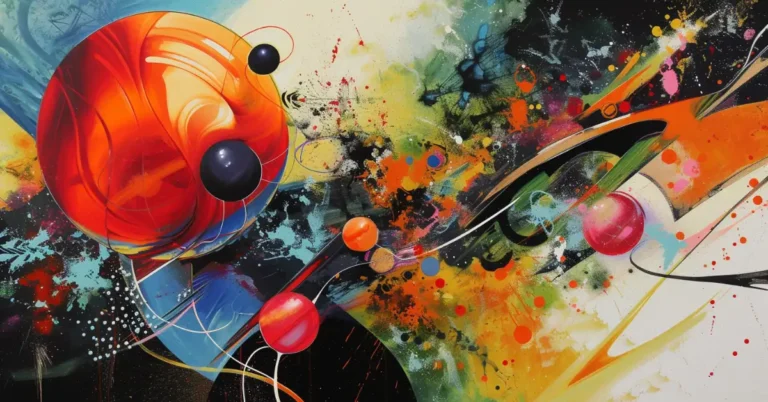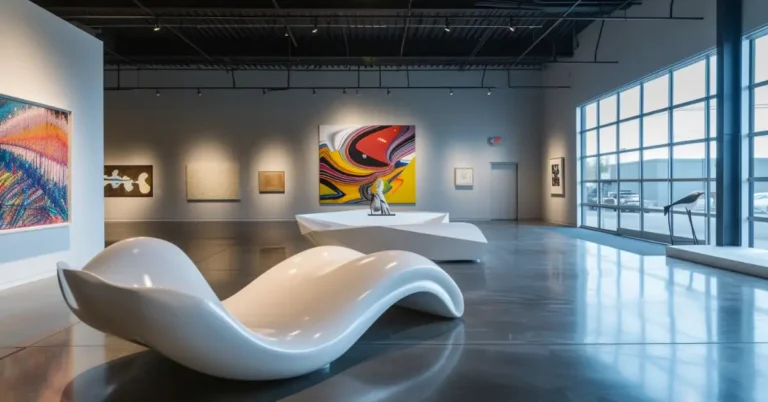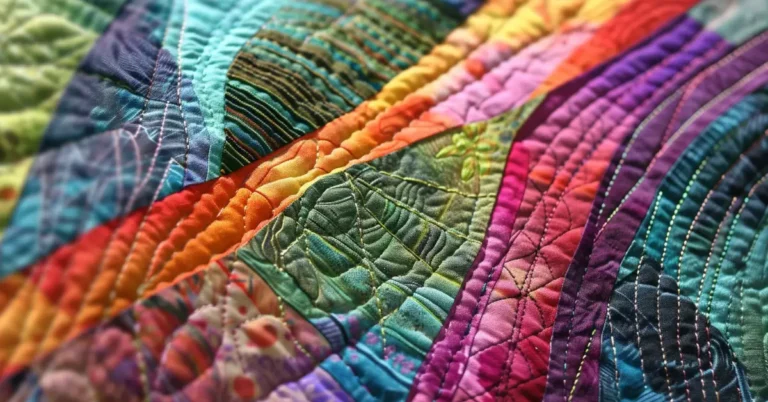Are you interested in exploring the vibrant and dynamic world of contemporary Mexican art? From painting and sculpture to installation and performance art, this fascinating and diverse field reflects Mexico’s rich cultural heritage while embracing new forms and ideas. In this article, we will introduce you to some of the most innovative artists working today and explore the key themes and trends in contemporary Mexican art.
What Is The Historical Context of Contemporary Mexican Art?
When discussing contemporary Mexican art, it is important to understand its historical context. Mexico has a rich artistic heritage that dates back to pre-Columbian times. However, the Mexican Revolution of 1910-1920 had a significant impact on the country’s art scene. The revolution was a time of great social change and artists began to use their work to express the political and social issues of the time.
The muralist movement emerged during this period and became a defining feature of modern Mexican art. Artists such as Diego Rivera, David Alfaro Siqueiros, and José Clemente Orozco used murals to depict the struggles of the working class and indigenous people. These murals were not just decorative pieces, but rather a means of communicating political messages to a wider audience.
The Mexican government supported the muralist movement and commissioned many of these artists to create murals in public spaces. This allowed the art to be accessible to all and helped to spread the messages of social and political change.
Contemporary Mexican art has continued to be influenced by the country’s history and social issues. Many artists today use their work to address issues such as immigration, gender equality, and the environment. The art scene in Mexico has also expanded to include a diverse range of mediums, from traditional painting and sculpture to video art and performance art.
Prominent Figures in Contemporary Mexican Art

IG: isisruce
When it comes to contemporary Mexican art, there are several prominent figures who have made significant contributions to the field. In this section, we will discuss some of the most well-known artists that have helped shape the landscape of contemporary Mexican art.
Frida Kahlo and Diego Rivera
No discussion of contemporary Mexican art would be complete without mentioning Frida Kahlo and Diego Rivera. These two artists are perhaps the most famous Mexican artists of all time, and their work has had a profound impact on the art world. Kahlo’s self-portraits and Rivera’s murals are instantly recognizable and have become iconic representations of Mexican art.
David Alfaro Siqueiros and José Clemente Orozco
David Alfaro Siqueiros and José Clemente Orozco were both members of the Mexican muralism movement, which aimed to create art that was accessible to the masses. Siqueiros was known for his politically charged murals, while Orozco’s work often explored themes of human suffering and social injustice.
Emerging Artists
While the aforementioned artists are certainly important figures in contemporary Mexican art, many emerging artists are making waves in the art world. Javier Barrios, Ana Segovia, Germán Cueto, and Gerardo Murillo are just a few of the up-and-coming artists that are worth keeping an eye on.
Other contemporary Mexican artists who are making an impact include Abraham Ángel, Fernando Romero, Damián Ortega, Gabriel Orozco, Minerva Cuevas, Dr. Lakra, and Francisco Toledo. These artists are all pushing the boundaries of what is possible in contemporary art, and their work is helping to shape the future of Mexican art.
Artistic Elements and Techniques

IG: isisruce
As we explore contemporary Mexican art, we cannot ignore the unique artistic elements and techniques that make it stand out from other forms of art. From the use of vibrant colors and materials to the incorporation of symbols and kitsch, Mexican artists have developed a distinct style that is both visually stunning and deeply meaningful.
Use of Color and Material
One of the most striking features of contemporary Mexican art is the bold use of color and material. From the bright pinks and yellows of flowers to the deep blues and greens of wings and dogs, Mexican artists use color to convey emotion and meaning. They also use a wide range of materials, including paper, metal, and even recycled materials, to create unique and textured works of art.
Form and Installation
Mexican artists also experiment with form and installation to create immersive and thought-provoking experiences for the viewer. Many artists use large-scale installations that incorporate a variety of materials and symbols to create a multi-sensory experience. Others use more traditional forms, such as painting and sculpture, but infuse them with a Mexican sensibility that makes them truly unique.
Overall, the artistic elements and techniques used in contemporary Mexican art are a testament to the creativity and ingenuity of Mexican artists. By pushing the boundaries of form and material, they have created a vibrant and dynamic art scene that is truly one-of-a-kind.
Influence of Politics and Identity

Contemporary Mexican art is heavily influenced by politics and identity. Mexico City, being the cultural and political capital of Mexico, has played a crucial role in shaping the identity of Mexican art. The city has been the melting pot of different cultures, ethnicities, and classes, which has resulted in a unique blend of art that reflects the country’s diverse identity.
Mexican identity is a central theme in contemporary Mexican art. Artists use their work to explore and express their personal experiences, cultural heritage, and national identity. They often draw inspiration from Mexican history, mythology, and folklore to create their art. This has resulted in a rich and diverse body of work that reflects the country’s complex identity.
Politics is another significant influence on contemporary Mexican art. Mexico has a long history of political turmoil, corruption, and social inequality, which has shaped the country’s art scene. Artists often use their work to comment on social and political issues, such as poverty, human rights, and immigration. They also use their art to challenge the dominant cultural and political narratives and to give voice to marginalized communities.
In recent years, Mexican art has gained international recognition for its unique blend of politics and identity. Artists such as Frida Kahlo, Diego Rivera, and David Alfaro Siqueiros have become global icons of Mexican art. Their work has inspired a new generation of artists who continue to explore and express the country’s complex identity through their art.
Contemporary Art Scene in Mexico

Mexico’s contemporary art scene is a vibrant and diverse space that reflects the country’s rich cultural heritage. From the bustling galleries of Mexico City to the tranquil art studios of Oaxaca, there is something for everyone in Mexico’s art world.
Mexico City’s Galleries and Museums
Mexico City is the heart of Mexico’s art world, with a thriving contemporary art scene that is constantly evolving. The city is home to some of the country’s most renowned art institutions, including the Museum of Modern Art, the Museo Soumaya, and the Instituto Nacional de Bellas Artes y Literatura.
The Museum of Modern Art is one of the most important art museums in Mexico, with an extensive collection of contemporary Mexican art. The museum also hosts a variety of temporary exhibitions, showcasing the work of both established and emerging artists.
The Museo Soumaya is another must-visit destination for art lovers in Mexico City. The museum’s collection includes works by some of the most famous artists in the world, including Salvador Dali, Vincent van Gogh, and Pablo Picasso.
The Instituto Nacional de Bellas Artes y Literatura is a government-run institution that promotes and preserves Mexico’s cultural heritage. The institute is responsible for managing a variety of cultural programs and events, including art exhibitions, concerts, and theater performances.
Oaxaca’s Art Scene
Oaxaca is a city in southern Mexico that is known for its rich cultural heritage and vibrant art scene. The city is home to a variety of art galleries and studios, showcasing the work of both local and international artists.
One of the most popular destinations for art lovers in Oaxaca is the Casa de la Ciudad. This historic building houses a variety of art exhibitions, workshops, and cultural events, making it a hub for the city’s art community.
Another must-visit destination in Oaxaca is the Museo de Arte Contemporáneo de Oaxaca. This museum is dedicated to contemporary art, with a focus on the work of Mexican and Latin American artists. The museum’s collection includes paintings, sculptures, and installations, as well as a variety of temporary exhibitions.
Art and Consumer Culture

Contemporary Mexican art has a close relationship with consumer culture, which is reflected in the works of many Mexican artists. The influence of consumer culture can be seen in the use of everyday objects, such as food packaging, advertising, and other consumer products, in their art. Such works of art often challenge the viewer to question the role of consumer culture in our lives.
Many contemporary Mexican artists are also concerned with issues of sustainability. They use recycled materials and found objects in their art to create a dialogue about the environment and the impact of consumer culture on our planet. The use of sustainable materials in art is a growing trend, and many Mexican artists are at the forefront of this movement.
The exchange of ideas and cultural influences between Mexico and other countries has also played a significant role in the development of contemporary Mexican art. Mexican artists have been influenced by international art movements, such as conceptual art, and have incorporated these ideas into their own work. This exchange has also allowed Mexican art to be seen and appreciated on a global scale.
Conceptual art has been particularly influential in contemporary Mexican art. Many Mexican artists use this approach to create works that challenge traditional notions of art and its purpose. They often use language, performance, and other non-traditional mediums to explore ideas and concepts.
Contemporary Mexican Art in Digital Age
As we explore the world of contemporary Mexican art, it’s impossible to ignore the impact of the digital age on this vibrant and evolving art form. With the rise of digital media, artists are using technology to push the boundaries of traditional art forms and create new and exciting works that challenge our perceptions of what art can be.
One of the most exciting developments in contemporary Mexican art is the use of video as a medium for artistic expression. From short films to experimental video art, Mexican artists are using this medium to explore a range of themes and ideas, from social justice to personal identity. The use of video allows artists to create immersive experiences that engage the viewer on a deeper level, and to experiment with new ways of storytelling that are unique to this medium.
Another way that digital technology is transforming contemporary Mexican art is through the use of online platforms. Many artists are using social media platforms like Instagram to showcase their work and connect with audiences around the world. This has allowed artists to reach new audiences and build communities of fans and supporters who are passionate about their work.
At the same time, digital technology has also made it easier for artists to collaborate and share their work with each other. Online forums and communities allow artists to connect with each other and share ideas and feedback on their work, creating a vibrant and supportive ecosystem that is driving the evolution of contemporary Mexican art.
Our Opinion about Mexican Modern Art on the Global Stage

Contemporary Mexican art is a vibrant and dynamic force in the global art scene. It is characterized by its profound social commentary, cultural symbolism, and bold use of color. As a team, we believe that Mexican modern art has made a significant impact on the global stage and continues to do so today.
One of the most striking aspects of Mexican modern art is its ability to convey profound social commentary. Many Mexican artists use their work to address important social issues, such as poverty, inequality, and political corruption. Through their art, they are able to shed light on these issues and spark important conversations about them.
Another defining feature of contemporary Mexican art is its rich cultural symbolism. Many Mexican artists draw on traditional Mexican motifs and imagery in their work, such as skulls, flowers, and religious iconography. This creates a powerful connection between the art and the culture it represents and helps to preserve and celebrate Mexico’s rich artistic heritage.
Finally, Mexican modern art is known for its vibrant and bold use of color. Many Mexican artists use bright, bold colors to create striking and visually stunning works of art. This use of color is not only aesthetically pleasing but also serves as a reflection of Mexico’s vibrant and colorful culture.
Overall, we believe that Mexican modern art is a valuable and important contribution to the global art scene. Its ability to convey important social commentary, celebrate cultural heritage, and use vibrant colors makes it a unique and compelling force in the world of art.
FAQ
What is Mexican modern art?
Mexican modern art emerged after the Mexican Revolution, blending traditional Mexican motifs with modernist styles like cubism and surrealism. It includes artists such as Diego Rivera, Frida Kahlo, and Rufino Tamayo and continues to influence contemporary art movements worldwide.
What is Mexican style art called?
Mexican style art is commonly referred to as Mexican folk art or “artesanía” in Spanish. This type of art is known for its vibrant colors, intricate designs, and use of traditional materials.
What are the 4 styles of contemporary art?
Contemporary art is characterized by diversity, but some of the most common styles are abstract, figurative, minimalist, and pop art.
What are the characteristics of Mexican modernism art?
Mexican modernism art is characterized by the use of geometric shapes, asymmetrical compositions, strong contrast of light and shadow, and sharp focus. These characteristics were used by artists such as Diego Rivera and Frida Kahlo to express political and social issues in Mexico
If you liked this blog post about the topic: “Contemporary Mexican Art“, don’t forget to leave us a comment down below to tell us about your experience with it.
If you want to keep reading more from us, have a look at these articles.





